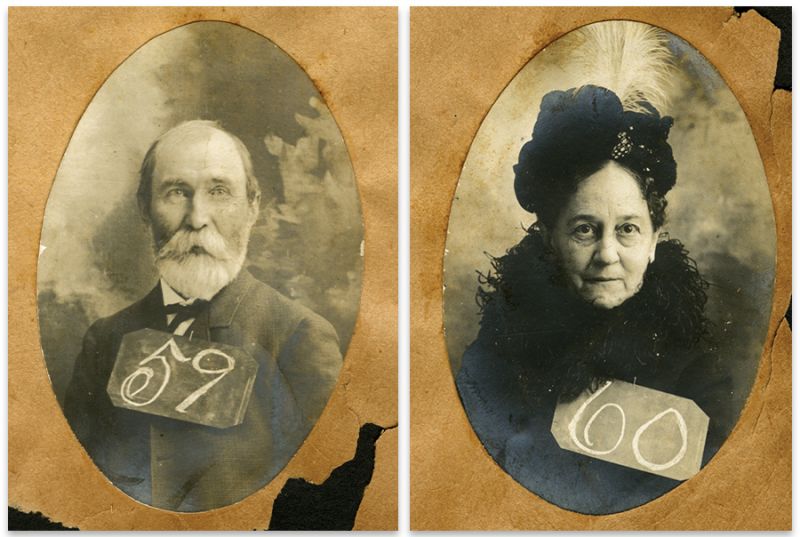Find out how Murray, who was orphaned as a child, earned his wealth and why he shared it with the city

Andrew and Mary Murray’s numbered portraits from the 1901 South Carolina & West Indian Exposition Photo Passbook.
The Holy City has many well-known surnames—Laurens, Jenkins, Riley, and Pinckney, to name a few—but which is the most quintessentially Charleston? In the running for first place prominence in the early 20th century has to be “Murray”—as seen in Murray Boulevard, Mary Murray Drive, The Citadel’s Murray Barracks, and what for decades was Murray Vocational School (now condominiums) on Chisolm Street.
Andrew Murray was born in Charleston on February 6, 1844, to Scottish immigrants. When his parents died young, the 14-year-old boy was sent to the Charleston Orphan House that once stood on the corner of St. Philip and Calhoun streets. Later, W. Jefferson Bennett, the son of Governor Thomas Bennett, took Murray into his home, giving him a job at the Bennett Rice Mill.
With that boost from public and private benevolence, Murray rose to great heights, becoming a partner in the rice mill with two of Bennett’s sons and eventually taking over ownership until he retired in 1912. Murray served on city council, public and private boards, and numerous commissions and societies.

(Left) The boulevard along the low Battery is named after Andrew Murray; (Right) The Citadel’s Murray Barracks, or First Battalion, was built in 1927 and rebuilt in 1999.
He and his wife, Mary, the daughter of his benefactor, had no children, and Charleston, in a way, became their heir. Murray donated what in today’s funds would amount to more than $15 million dollars to charities, including the Orphan House, hospitals, the Circular Congregational Church, the College of Charleston, and the library of the Bennett public school.
When the city began filling in land south of Broad Street on the western edge of the peninsula, Murray gave generously to that project. The city acknowledged his munificence by naming the iconic boulevard along the low Battery after him, while the drive circling Hampton Park honors his wife. “He gave to almost every worthwhile cause and in a very large way,” said M. Rutledge Rivers, longtime board chair of the commissioners of public schools, according to a 1951 newspaper article. “His gifts were lasting. He gave not for show, but for the good of mankind.”
Murray died on December 20, 1928, and is buried in Magnolia Cemetery. Rivers summed up the relationship between Charleston and Murray: “No city ever had a truer friend.”